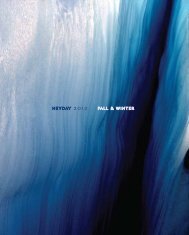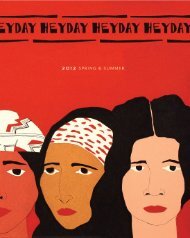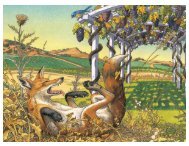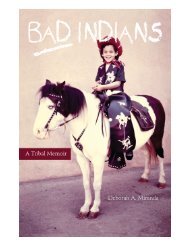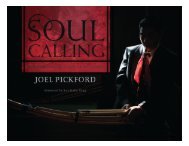Book sample (PDF) - Heyday
Book sample (PDF) - Heyday
Book sample (PDF) - Heyday
- No tags were found...
You also want an ePaper? Increase the reach of your titles
YUMPU automatically turns print PDFs into web optimized ePapers that Google loves.
xvi Introductionsfor hand-crafted items. The “art basket” was primarily made for export tonon-Natives, part of a new economic strategy. Individual weavers respondedto demand with innovations, often modifying traditional forms, expandingthe use of decorative motifs, and refining traditional techniques to superfinelevels. This was partly in response to the tastes of buyers, but perhaps weaverswere also exploring the limits of their abilities and imaginations. Some becamefamous as master artists, such as the Washoe weaver Louisa Keyser (Datsolalee),the Wiyot weaver Elizabeth Hickox, and the Pomo weavers JoseppaDick, Mary Benson, and Sarah Knight.Diversity and abundance are the hallmarks of Native California, whetherin the context of language—California was one of the three most linguisticallydiverse regions on Earth—or ecological diversity. Not surprisingly, oneof the great attractions of California Indian basketry is its seemingly endlessvariety. This variety, along with the astounding quality and beauty of Nativebaskets made throughout California, reveals not only masterful techniquebut botanical expertise, distinctive cultural traditions, and personal artisticvision. They are vessels of delight, American masterpieces.The Native American ethnographic collections at the California Indian HeritageCenter, once included in the collections of the California State IndianMuseum and still under the umbrella of California State Parks, include morethan thirty-two hundred baskets from Native California.1 Marvelous andimportant examples of basketry from across the expanse of North America.are included as well. Beyond sheer quantity, perhaps the greatest value of theCalifornia collection is in its completeness. Nearly every genre and style ofbasket is represented. The weaving traditions of communities throughout theregion are here, from the days when California was a Spanish colony and apart of Mexico to the mid-1950s. Baskets from small tribal communities whoseworks have rarely been collected are here, and in some instances, the completespectrum of a community’s basketry history and tradition is represented.The collection ranges from exquisite art pieces by some of Native California’smost gifted master artists to heavily worn baskets documenting everyday life.It is much like a great library. A cause for outright celebration is the fact thattwenty-first century weavers are still making these ancient baskets. 2 KathyWallace (Yurok/Karuk/member of the Hoopa Tribe) describes its significancefor basket weavers:A basket collection the size and depth of this one is a majorresource for California Indian basket weavers. Whether one islearning to weave or expanding one’s knowledge, a weaver is greatlyhelped by seeing and handling the baskets of his/her ancestors.To have access to a collection of baskets is ideal. To be able to lookclosely, feel, turn the basket over and around, and examine it insideand out can be invaluable.



